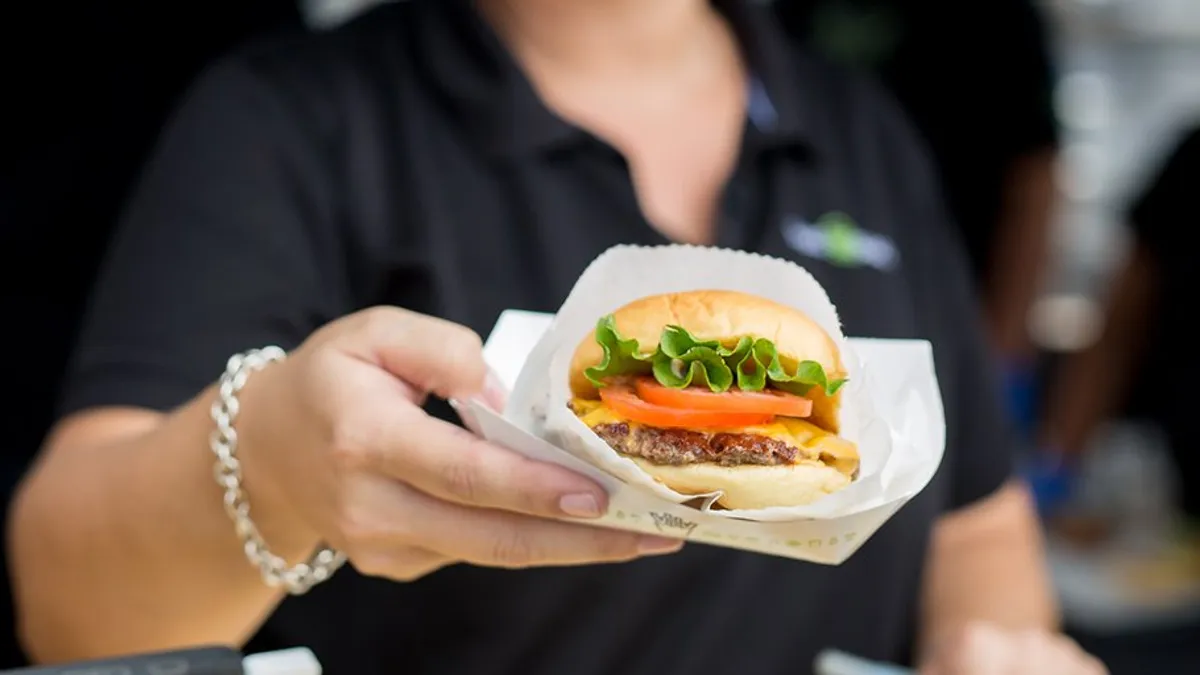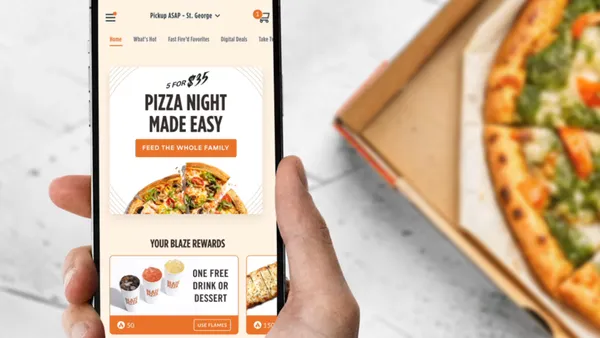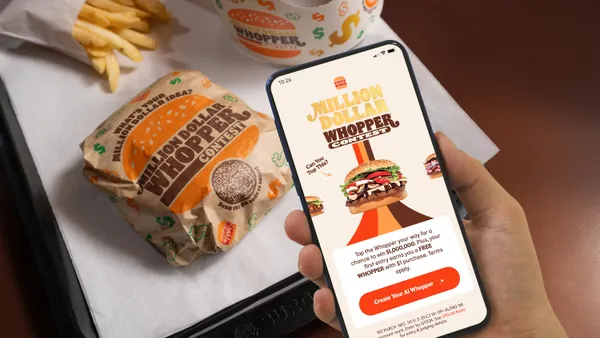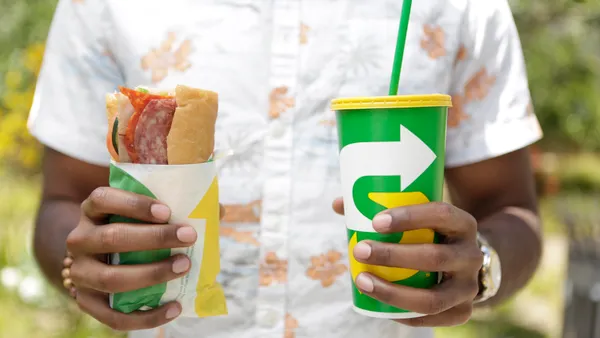Dive Brief:
- Jay Livingston has been named the first chief marketing officer of Shake Shack, where he is responsible for leading the trendy burger concept’s strategic and innovative marketing, according to Nation's Restaurant News.
- The new executive told Adweek he plans to focus on personalized guest experiences through digital channels, such as the brand's app, delivery partners and in-store kiosks.
- Livingston comes from dog-treat subscription service BarkBox, where he’s worked as marketing head since July 2017. In December, Shake Shack and BarkBox partnered up to offer an exclusive line of chew toys, including the BarkBurger, according to Adweek.
Dive Insight:
As the very first CMO of the 200-unit concept, Livingston has his work cut out for him. But perhaps no challenge will be greater than bringing Shake Shack’s digital presence — especially its order-and-payment kiosks — up to speed. In late 2017, kiosks enabled Shake Shack to introduce its first cashierless and cash-free location in New York City. But the company abandoned expansion plans about six months later because of customer backlash.
By August 2018, Shake Shack revisited kiosks, but added them alongside cashiers. In August, there were five such hybrid models open and the company announced plans to test more in in markets with high labor costs, such as San Francisco. During Shake Shack’s August earnings call, CEO Randy Garutti admitted that the company has a lot to learn going forward. Livingston will likely facilitate those learnings, as part of his job is to analyze customer data to help the company expand into new markets, AdWeek reports.
With his marketing prowess, Livingston is also well-positioned to help the company overcome two major hindrances of the initial rollout — customers simply didn’t know how to use the technology, according to comments on Google, and most also don’t want to use them. According to a poll conducted by MSN, 78% of customers said they would be less inclined to go to a restaurant that has automated ordering kiosks.
Livingston's efforts are likely to be buoyed by other major restaurant chains accelerating their kiosk deployments — expediting customer education on the how-to piece as they become more familiar with the technology in general. McDonald’s, for example, is on pace to add self-order kiosks in about 1,000 restaurants each quarter, while Taco Bell plans to have kiosks systemwide by the end of 2019.
Restaurant brands have an incentive to educate customers to get used to kiosks. During its Q4 earnings call, McDonald’s CEO Steve Easterbrook said the early-adoption kiosk markets, including Australia, Canada, Italy and the Netherlands, have experienced higher usage and in-store customers year-over-year. In some of those restaurants, 90% of in-store guests use kiosks.
“Greater percentages of customers that go into our restaurants are using the kiosk and they get more confident with it, they get more familiar with it. They enjoy just the time they're able to spend on it,” he said.
These renovations that include kiosks, he adds, are yielding higher customer satisfaction scores and stronger sales lifts. This may just be the case study Shake Shack needs to re-focus on kiosks. With a dedicated executive tasked with this focus, it may be easier this time around.













